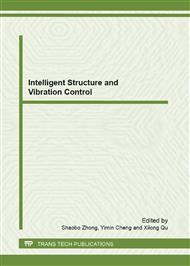p.968
p.973
p.977
p.982
p.987
p.992
p.998
p.1003
p.1008
Oxidative Damage of Cardiovascular System in Rats Following Lead Exposure
Abstract:
The aim of the current study is to figure out the relationship between the oxidative damage in cardiovascular system and lead exposure. Oxidative damage was investigated in the heart and aorta of rats exposed to lead acetate for 6 weeks. Male wistar rats were randomly divided into three groups: low-dose (10 mg/kg), high-dose (40 mg/kg) lead acetate and control groups. The rats in low-, or high-dose groups were received 10 mg/kg and 40 mg/kg lead acetate by garages, and the rats in control group were administrated same amount distilled water only. We compared the three groups in terms of the level of T-SOD, NOS, and MDA in serum and heart, aorta and histological examination. We found the activity of T-SOD, NOS in rats treated with low and high doses of lead acetate were significantly lower than in the control group. The content of MDA in the low and high doses of lead acetate groups was significantly higher than in the control group. In addition, the microscopic morphology of heart and aorta in the low- and high-dose groups showed differences from the control. Oxidative damage may be involved in the process of heart and aorta dysfunction induced by lead exposure.
Info:
Periodical:
Pages:
987-991
Citation:
Online since:
February 2011
Authors:
Keywords:
Price:
Сopyright:
© 2011 Trans Tech Publications Ltd. All Rights Reserved
Share:
Citation:


